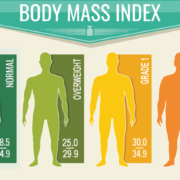Nutritional Epidemiology: Specification Curve Analysis
Did you look up quadrillion? It’s a 1 with a whole lot of 0s—15 to be exact.
When I finished Saturday’s Memo, the researchers had chosen an area of nutritional epidemiology to focus on: the analytics used to analyze the data. They began with the premise that there are many ways to analyze any data set. They then identified published research studies that examined the consumption of red meat and mortality. They identified 15 publications reporting on 24 studies that examined the effect of red meat on all-cause mortality.
They weren’t doing a meta-analysis to see all the results of all the studies combined; they used a newer technique called specification curve analysis. They identified the type of data used in the analysis, the number of variables, the number of covariates, as well as demographic data. From that information, they then calculated the total number of ways each data set could be analyzed—the specification curve analysis. Turns out that number is 10 quadrillion! That exceeds the capacity of the computing power of a small country, and I can’t even imagine how much electricity that would consume.
They decided to take a randomized sample of the possible ways to analyze the data with specific variables and covariates in each and came up with 1,440 different approaches to analyzing the data. They ran additional tests on the data and eliminated 232 approaches because the data exceeded norms.
Then they ran the remaining analytic approaches on data from several years of the NHANES study. What did they find?
- The median hazard ratio (HR) was 0.94 for the effect of red meat on all-cause mortality. That means the mortality risk was decreased 6% if the subject ate red meat.
- HRs ranged from 0.51 to 1.75; 435 approaches yielded HRs more than 1.0 (increased risk) and 773 less than 1.0 (decreased risk). Most analyses showed that eating red meat reduced the HR, and thus reduced the risk of dying.
- Of all the results, 48 (almost 4%) were statistically significant; of those, 40 indicated that red meat reduced all-cause mortality and 8 that red meat increased all-cause mortality.
Does this mean that eating red meat decreases your risk of dying early? We’re not done yet. We’ll put it all in perspective on Saturday.
What are you prepared to do today?
Dr. Chet
References:
1. https://www.sensible-med.com/p/the-definitive-analysis-of-observational
2. Journal of Clinical Epidemiology 168 (2024) 111278









